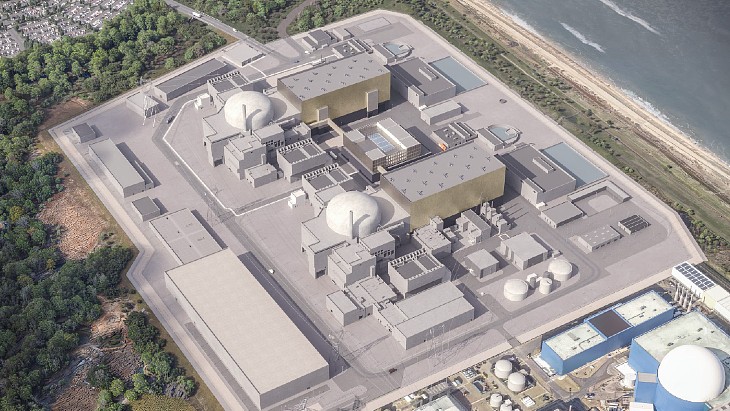.jpg) |
| The Curiosity rover's battery is in the rear module inclined at 45º |
With one week before its launch, NASA's latest craft bound for Mars has been fitted with the nuclear battery that will keep the transport vehicle warm in space and power a rover for up to 14 years.
The Curiosity rover is in effect a large mobile laboratory that will explore the surface of Mars from a landing point in the Gale Crater. It is about twice as long and five times as heavy as the two previous rovers, Spirit and Opportunity. Curiosity will be the first rover with the power to drill into Martian rocks and analyse the results on-site.
After a rocket launch, the 'cruise' vehicle will detach for the 204 million km journey to Mars. It will use a 12.8 square metre solar array to sustain navigation and communication systems while the nuclear battery within the rover is used to maintain certain critical temperatures via a pumped fluid heat transport system. Once the rover is on Mars, all its power will come from the nuclear battery. The rover has a design lifespan of 89 weeks to conduct its primary scientific work but it has a good chance of operating for much longer thanks to the nuclear battery's minimum lifetime of 14 years.
Curiosity's nuclear battery is the first of a new 'multi-mission' design that uses solid state thermocouples to produce electricity from the steady decay heat coming from 4.8 kg of ceramic plutonium-238 oxide. The unit is modular and several could be combined to provide larger amounts of reliable power for future missions. It includes eight individually packed and shielded plutonium heat sources and weighs 48 kg in total. Curiosity will have about 2.7 kWh per day at its disposal, far in excess of the 1 kWh per day maximum of the solar-powered rovers.
.jpg) |
| The nuclear battery is test-fitted at NASA's Jet Propulsion Laboratory in July. Radiator fins provide passive cooling when heat is not required (Image: NASA - Cory Huston) |
NASA noted the reliability of radioisotope thermal generators over some 40 years of major missions in providing heat to maintain proper operating temperatures for equipment and instruments against the cold of space. The agency said both it and the Department of Energy (which supplied the unit) "are committed to continuing their long heritage of safe and careful use of radioisotope power systems in service of the peaceful exploration of space for the benefit of all humankind."
The battery was test-fitted in July then removed for safe-keeping. It has now been fitted again as the full launch vehicle is assembled and placed atop an Atlas V rocket. Launch is scheduled at Cape Canaveral between 25 November and 18 December with touchdown on Mars around August next year.
Researched and written
by World Nuclear News






_69614.jpg)





